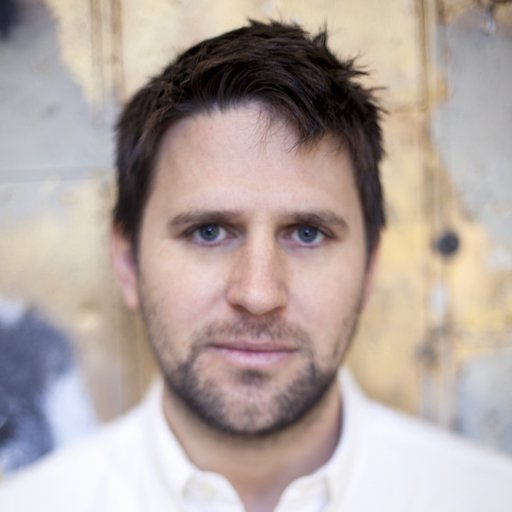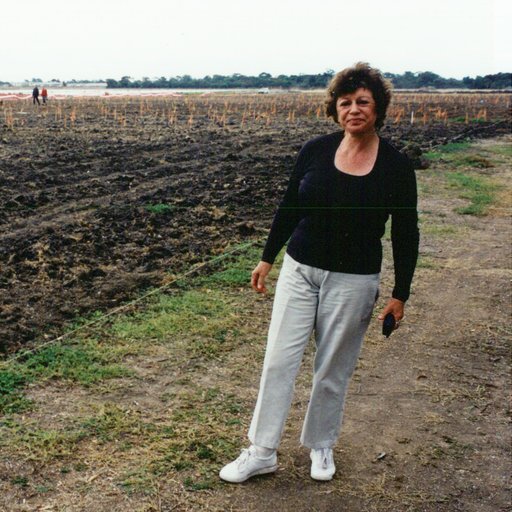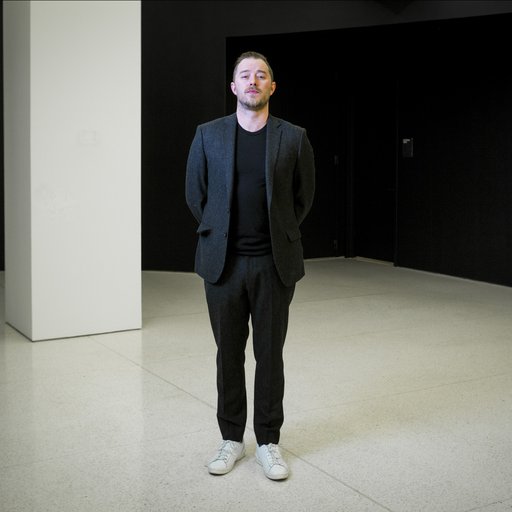In the coming months, a slew of new domain suffixes—like .church, .car, and .pizza—will become available to the public, giving businesses and individuals the opportunity to get much more specific with their URLs than the previous .com, .net, and .org domains allowed. And with this new roll out, which the Internet Corporation for Assigned Names and Numbers (ICANN) has been developing for the past several years, comes .art—a domain that many art-world institutions, like the Stedelijk Museum in Amsterdam, have already applied for.
Who will be able to use .art and what will this mean for the art world? The answer is partly up to e-flux and its founder Anton Vidokle. E-flux is an artist-run private arts organization that manages several newsletters announcing global events, exhibitions, lectures, and publications relating to contemporary art. E-flux charges organizations to list in their newsletters, which are selectively curated by e-flux, helping to fund e-flux’s impressive program, which includes a monthly journal, an exhibition space in New York, special projects, and exhibitions. Since its inception 19 years ago, e-flux has come to be regarded as an authority on contemporary art.
Though the addition of a .art domain might not seem like a big to-do (anyone who’s ever set up a website knows how mundane and routine registering a web address truly is), allowing one organization that already has stakes in the art world to determine who does and does not get to join the .art “club” is—or could be—a very big deal. (For more about implications of domain real estate in the virtual art world and e-flux’s role within it, see an article this writer wrote in 2014 while DeviantArt and e-flux were vying for the rights to administer .art.)
But will e-flux become the gatekeeper of the virtual art world? To find out, Artspace’s editor-in-chief Loney Abrams asks e-flux founder Anton Vidokle about how the .art domain will reorganize the internet, about whether or not it could change the way we browse, and about the importance of truth in the age of fake news.
Why would someone want a .art domain? And what are the benefits of having one?
A lot of art organizations don’t actually have the word “art” in their domain name. For example, the ICA in London currently has the address, ICA.org.co.uk. First of all, it’s very complicated and hard to remember, and secondly, it really doesn’t signify in any way to people who are not art professionals that this would be an address of an art organization that has thousands of works of art and literature about art on its website. So, the ICA in London is switching to ICA.art, which obviously sounds a lot clearer and is easier to remember. And most importantly, it immediately identifies the organization as an art organization, enhancing its visibility or intelligibility to the public.
UK Creative Ideas Limited (UKCI) is the company that officially owns the rights to administer the domain. What is e-flux’s relationship to UKCI?
UKCI is a company based in London. It was formed specifically to develop this domain and behind it is a Russian investor named Ulvi Kasimov, who won the rights to administer the domain at a private auction by ICANN. So UKCI basically oversees all of the technological and day-to-day things and they run the database—which is what being a registry really is. E-flux was one of the 11 organizations that applied to ICANN but competing in the auction was really beyond our financial duties. Kasimov reached out to us immediately after he got the domain because he wanted to involve everybody that applied in some capacity. I accidently happened to be in Moscow at the time for the Moscow biennial, so we met and we talked a little bit. To make a long story short: we’re helping them because e-flux is a large network that’s been in the field for such a long time, and UKCI doesn’t have much of an art background. They brought us in as a consultant.
I read in your application when you applied for the .art domain and in it, e-flux pledged to donate some of the revenue back to under-funded arts organizations. I’m wondering if that pledge is being factored into the new arrangement with UKCI?
No, I don’t think so. If we had gotten the rights to operate the domain we would have—but I think for UKCI, it’s a very different economic calculation. They actually invested a lot of money to get the domain, whereas our application was a community application.
Do you believe that the internet should be curated?
No. I mean, particularly after this presidential election, we might understand a little bit more about certain dangers posed by the internet in terms of disseminating fake information and promoting fake news, creating a lot of confusion about what is factual, what is truth, and what is some kind of nonsense. So while I don’t think the internet should be curated, I think it’s very important that the internet in general (and specifically the art domain) has a rigorous relationship to truth. Maybe that has to do with cyber-squatting—not allowing people to just speculate the names, not allowing someone to pretend that they’re someone who they’re not. So I wouldn’t say it should be curated but I would say there needs to be some kind of mechanism to ascertain whether something is actually factual or truthful or not.
The art world is built on a foundation defined by exclusivity, prestige, and scarcity, but the internet, in theory, embodies the opposite: democratic access, inclusivity, and ubiquity. In the art world, this helps to level the playing field—
—That’s not really true. The internet is not inherently democratic in terms of visibility of certain things. There are certain names that guarantee a certain amount of traffic and then there are certain names that are difficult to remember. Like for example, “painting.com” or “art.com” is guaranteed a certain amount of traffic. So it’s not totally all democratic, and the problem with .coms specifically is that there are so many people who have registered names in that domain that there is almost nothing good left. So if you want to start a website now unless you’re able to pay thousands of dollars you have to settle for a really weird name that might include hyphens, or strange numbers and characters. Our domain is a totally new domain and all of the terms are available.
I just typed in “painting.com” and it redirects to Sherwin-Williams, a company that makes house paint. "Sculpture.com” brings me to a website that doesn’t really work. I can’t figure out what it’s for.
When I spoke with the owner of UKCI he said that when he tried “hermitage.com,” instead of getting the Hermitage Museum he got some pizza shop in New Jersey or something along this line. So he’s aware that this is kind of wrong and you should be able to get the actual institution.
Is that a real problem though? This was literally the first time I’ve ever typed in “painting.com” and that’s not because I’ve never used the internet to research painting. It’s not like if I needed a new computer, I’d type in “computer.com” and hope for the best. Normally people use the address bar as a Google search bar—rarely do they type in a full URL. Do you think that's how people really use the internet?
When ICANN created these new domains that are quite specific (like .car, .food, .art), the intention was to make a system that is much more logical than the one they started with where everything kind of went to .com as the default. But reorganizing the entire content of the internet and making it intelligible by the extension—whether it’s .art, .photography, or .architecture—just makes it easier. So, imagine if you’re in Berlin and you are looking for shoes. If you type in “shoes.Berlin” you would hopefully find what you’re looking for right away. It creates a possibility for a very logical system for organizing the enormous amount of content on the internet. Whether people are really going to use it like that or not is I think a much more complicated question, but the intention is to create something that is a little more rational than the system that is in place right now.
E-flux has gotten a little bit of criticism for its involvement with .art because people are concerned that it will be gatekeeper—
—Yeah, but I think people are always worried about that—and we’re not a gatekeeper.
I think on the other side of the coin is the fact that the brick and mortar gallery model isn’t easily sustainable right now. [In the past few months, Marlborugh Chelsea merged with Marlborough Contemporary in London, the lower east side’s Tomorrow and Hester galleries merged to become Downs & Ross, and Andrea Rosen, Feuer/Mesler, and Lisa Cooley Gallery closed.) Art organizations may be relying more on their web presence, and some are web-based all together. Is it possible that having a .art domain might give more visibility or credibility to organizations that don’t have a physical presence and that may rely on web traffic?
Well I think that the credibility of the domain will depend on whether UKCI really enforces their policy to not allow people to cyber-squat and assume someone else’s identity. In terms of the commercial side of art on the internet, I think a lot of people have been reluctant to buy things online—particularly valuable works because it’s very difficult to authenticate them. When you go to a gallery and a dealer, there is quite a lot of trust involved. I think that if UKCI really enforces and commits to this system they may be able to actually create a space on the internet where people could feel comfortable engaging in this kind of transaction that has to do with a basic kind of trust.
If I wanted a .art domain what would I do to get one?
For the first three months there’s what they’re calling a privileged access period, or professional period. The idea is to give art professionals, artists, and art institutions three months to have first choice to register names. After that they’re going to switch to what’s called a general availability period where basically anyone can register any name. During this professional period, you’d need a token to complete registration, which you can get from e-flux.
How does e-flux decide who gets tokens?
Well first of all we do have one of the biggest mailing lists in the art world. We’ve been around for twenty years and we have a rather large network of art professionals—close to 100,000 people. All of them have received tokens. Because the art world is not that large, it’s very easy for us to very rapidly figure out who’s an artist, who’s an art institution, etc. because we’ve been around for such a long time.
Would an unknown artist at the very beginning of their career be able to participate?
Absolutely. Emerging artists, even art students, are totally eligible for this. It’s not our position to police who’s an artist and who’s not. If someone wants to identify as an artist we cannot absolutely object to that.
So if anyone can obtain the .art domain, what is the point?
The point is to discourage abuse and speculation. UKCI has the power to protect certain names so that people won’t be able to cyber-squat, to hi-jack names of important artists or art institutions. There will be a process in place so that if this happens, the domain will get reassigned to its rightful owner. I think UKCI understands how important it is for an artist or an art institution to not be misrepresented by somebody else.
Is the .art domain comparable cost-wise to .com or .net?
This depends on the name. For example, political.art is priced at a couple of thousand dollars while political.xyz is available for something like 30k. During the professional period most names are priced $299. After it ends and the general availability starts, some names will cost more while others will cost less, and many names will have already been registered and unavailable. Most domains have two types of names: standard and premium. Premium names are usually very desirable generic terms like painting, art, or sculpture, and also short names of one, two or three character long, famous brand names, etc.—and they cost a lot more. The price of standard names will go down after this special professional period, but premium names will actually go up.
Which organizations have made the leap to .art?
Quite a lot. E-flux brought 30 or 40 museums on board right away including really important places like the Stedelijk Museum in Amsterdam, Walker Art Center in Minneapolis, the ICA in Miami, and DIA Art Foundation. That doesn’t mean that they will switch to the new address right away. You have to take into account that they’d have to reprint their catalogues, business cards, all their stationary, and whatever else has their contacts. So they’ve secured the name for now, and I think it will probably take them some months or maybe a year to switch over—although some of them are doing it right away. I know that the Stedelijk already switched.
So far have any artist-run galleries or emerging artists taken on the new domain?
Absolutely. Artists Space in New York—which of course is a very famous alternative space. Also the Raw Material Company in Dakar, Senegal, which is a really interesting alternative institution that’s been there for six or seven years now. And Para Site in Hong Kong that is a fantastic alternative space. So it’s a mixture of institutions—some are very established and some are quite smaller.
My last question is really important. Is “f.art” taken?
[Laughs] Actually a lot of people have inquired about this particular name. I wonder why.... But more seriously, ICANN is very restrictive with single-letter names, two-letter names, and three-letter names. This is because two-letter names usually correspond to countries—like .UK or .EU—so they have to get special approval to register a two-letter names to make sure it doesn’t conflict with an existing country’s extension. And if it’s a three-letter name, they need to make sure there aren’t any corporate acronyms that have been trademarked. But one-character names I really don’t know about except that they are very sought after because they’re very easy to remember, so they’re really valuable. How the price is calculated for name space has to do with how short the names are, and usually the shorter they are the more expensive they are. So I don’t know if “f.art” is taken or not, but I know if it’s not taken it will probably be quite expensive and the registry will probably want to find out who wants it and what they plan to do with it.



























